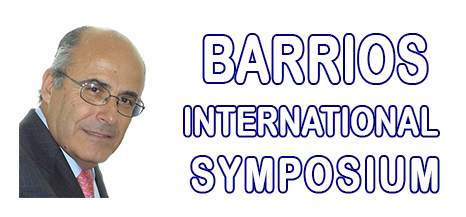ORAL
13:00 LUNCH
| SESSION: AdvancedMaterialsThuAM-R8 | Marquis International Symposium on New and Advanced Materials and Technologies for Energy, Environment and Sustainable Development(3rd Intl Symp. on New and Advanced Materials and Technologies for Energy, Environment and Sustainable Development) |
| Thu Oct, 26 2017 | Room: Maria Luisa & Maria Fernanda |
| Session Chairs: Mahesh Kumar; Anil Shantappa Malipatil; Session Monitor: TBA |
12:30: [AdvancedMaterialsThuAM04]
Some Important Factors in Porphyrin-based Dye-sensitized Solar Cells: An Empirical and Theoretical Study Nasser
Safari1 ; Pooya
Tahay
1 ; Maryam
Adineh
1 ; Zahra
Parsa
1 ; Ali
Alavi
1 ; Eric
Wei Guangdiau
2 ;
1Shahid Beheshti University, tehran, Iran (Islamic Republic of Iran);
2National Chiao Tung University, Hsinchu, Taiwan ("Chinese Taipei" for IOC);
Paper Id: 295
[Abstract] A series of zinc porphyrin dyes, M-disubstitution push-pull porphyrin, β-disubstotution push-pull porphyrin and M-β-substitution push-pull porphyrin (1-5) by having anchoring group either at meso-phosition (M) or Beta position (β) of a zinc porphyrin were compared by density functional theory. Their electronic, spectroscopic properties and HOMO-LUMO properties of the dyes were studied. The effects of ᴨ-conjugate group (ethenyl and acetylene) and different substitution positions of electron-donor and electron-acceptor on the optoelectronic properties of dyes are demonstrated. The photophysical and electrochemical properties of this dyes modified by changing the substitution position of the donor and acceptor. The results reveal that the different substitution position of electron-donor had an influence on the energy levels, absorption spectra, shape and characteristic of HOMO-LUMO orbitals. Following these results two new donor-π-bridge-acceptor zinc porphyrins with dimethylaminonaphthalene electron donating moiety, coded T1 and T2, were synthesized and used as sensitizers in dye sensitized solar cells (DSSCs). Both dyes showed excellent photovoltaic properties with power conversion efficiencies of 8.0 and 9.6% for T1 and T2 respectively, for which the device performance of T2 dye is superior to that of N3 dye.[1] The photocurrent efficiency of dye-sensitized solar cells (DSSCs) extremely depends on titanium dioxide nanoparticles size and their interactions with dye. In order to provide a comprehensive investigation of TiO2 nanoparticles size relation with different dye types in DSSCs, three sizes of TiO2 nanoparticles and two different dye types include a porphyrin dye (T2) and a ruthenium dye were synthesized. Steady state current–voltage (J–V) characteristics were investigated for fabricated DSSCs and its results demonstrated optimum TiO2 nanoparticles size changed with dye types.[2] The results for N3 dye shows that the surface area of the TiO2 nanoparticles is a key factor for N3 cells which restrict by TiO2 pore diameter and recombination at surface area traps. In contrast, the density of localized states of the TiO2 film under the LUMO state of the porphyrin dyes is the dominating factor for the performance of the solar cells, which is restricted by the surface area of the TiO2 nanoparticles.
13:00 LUNCH







